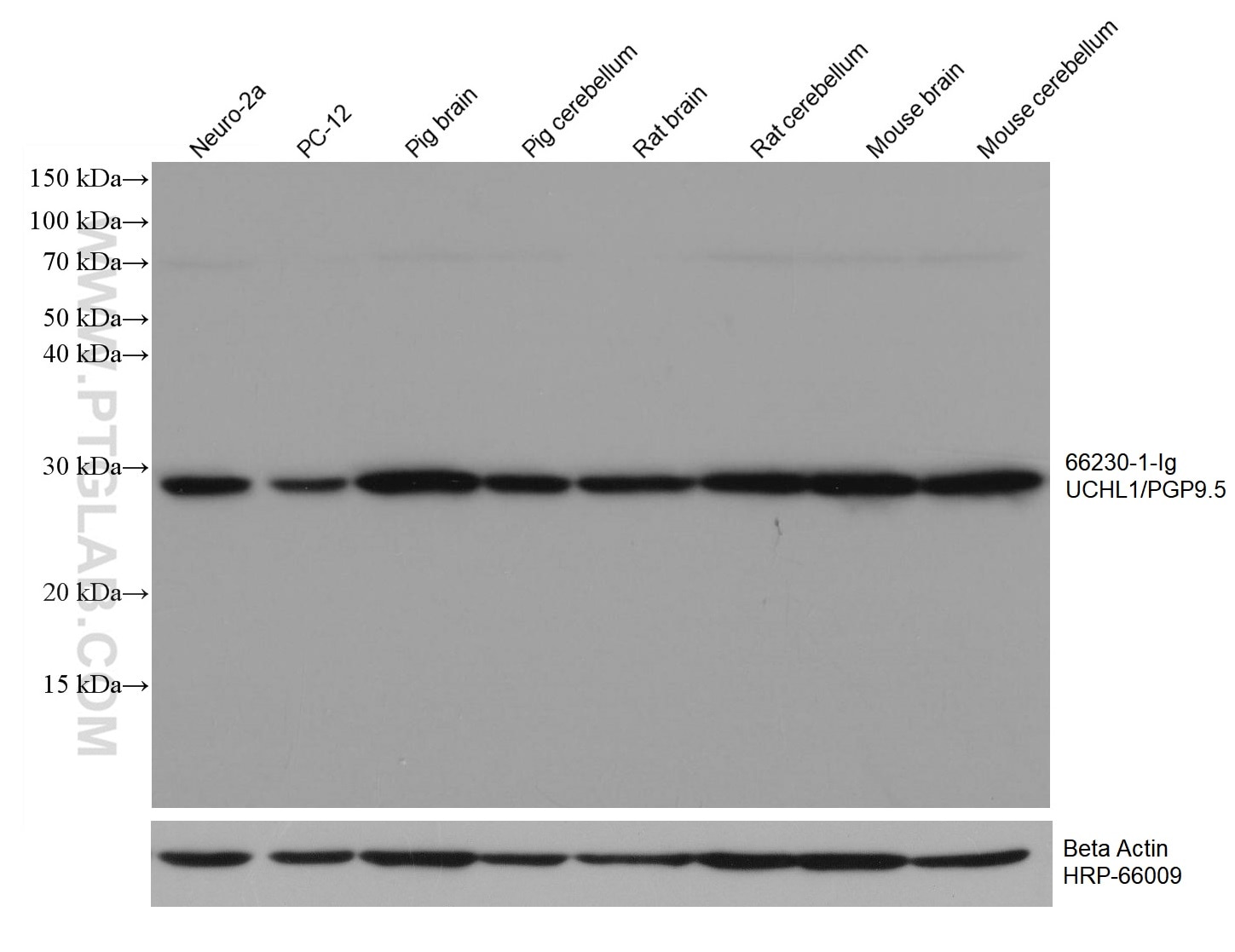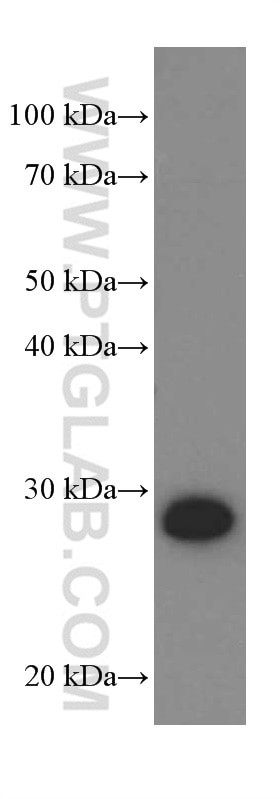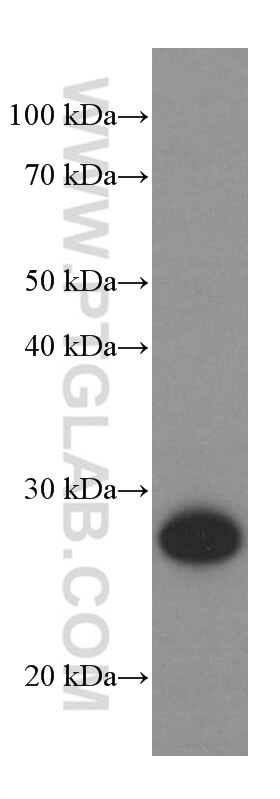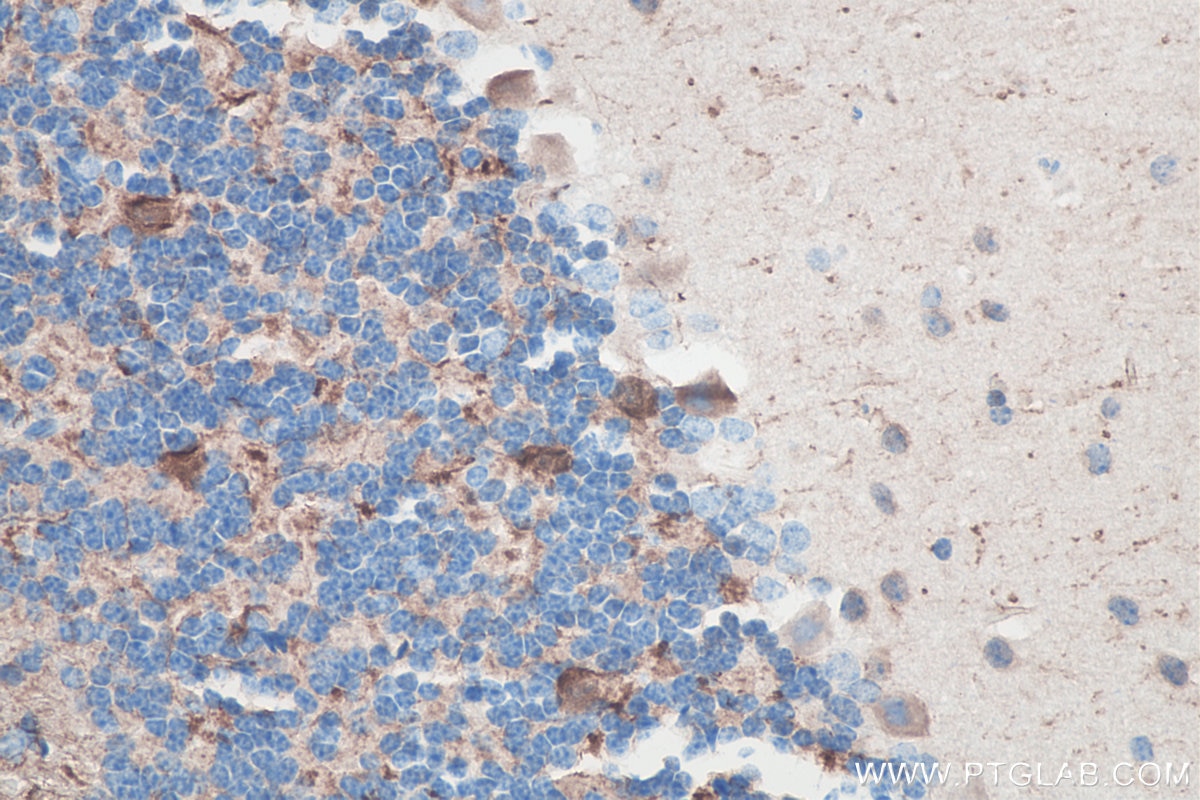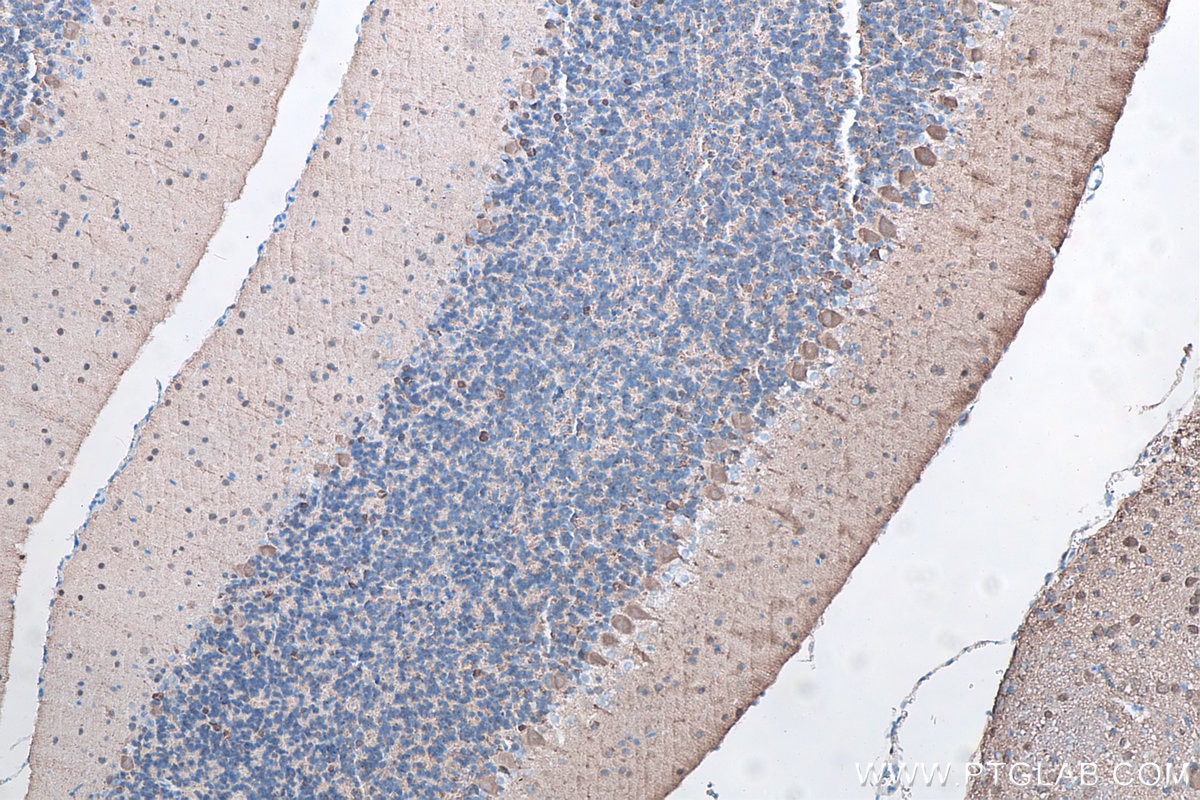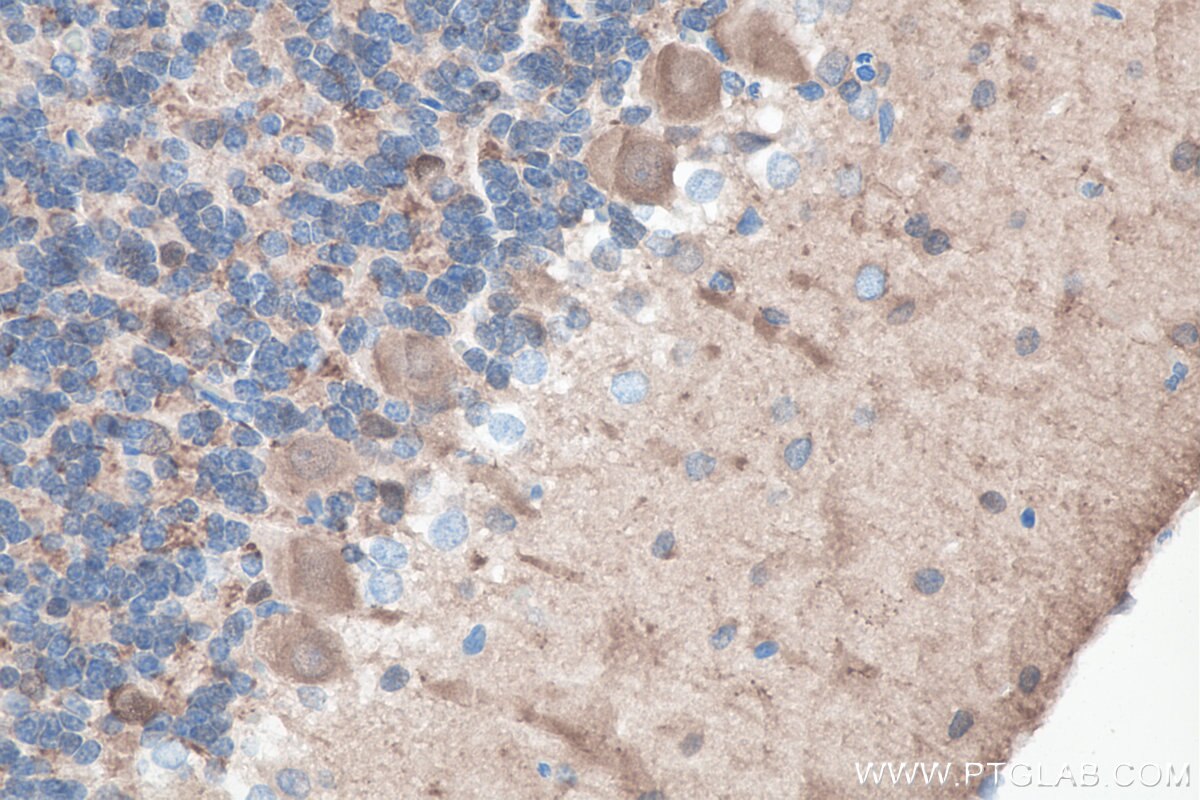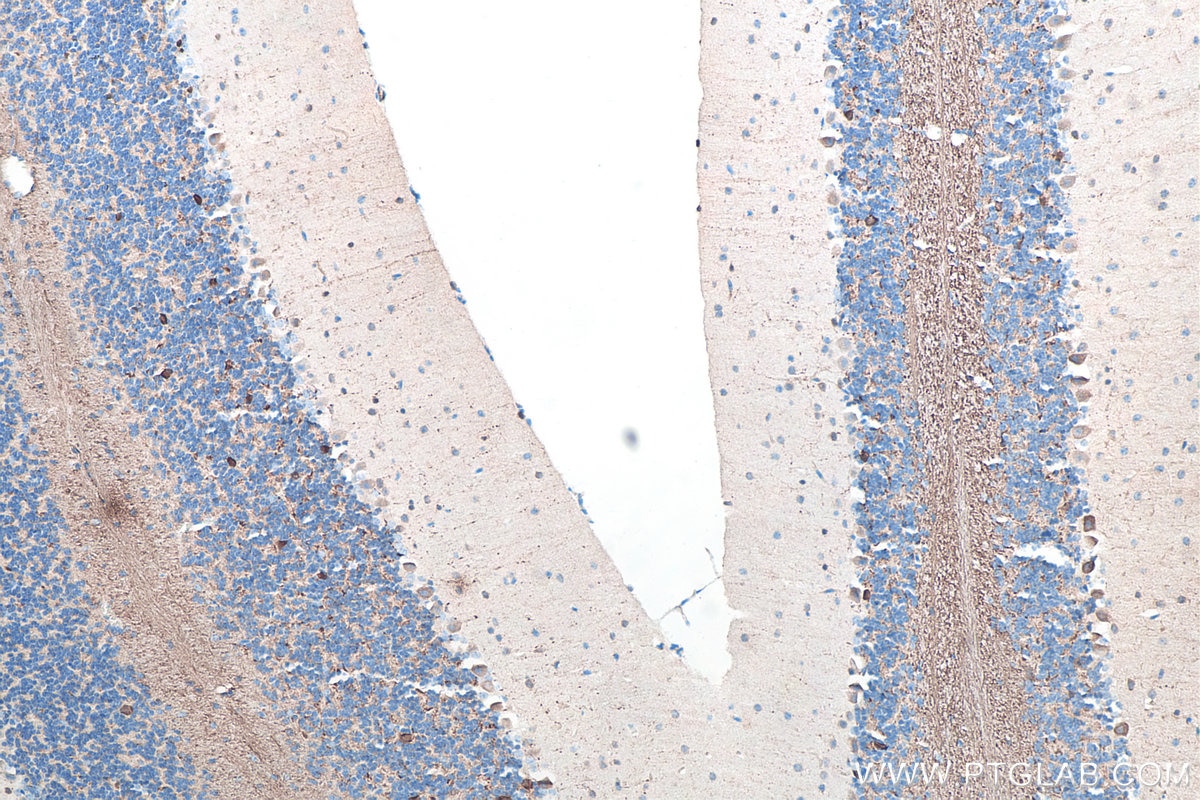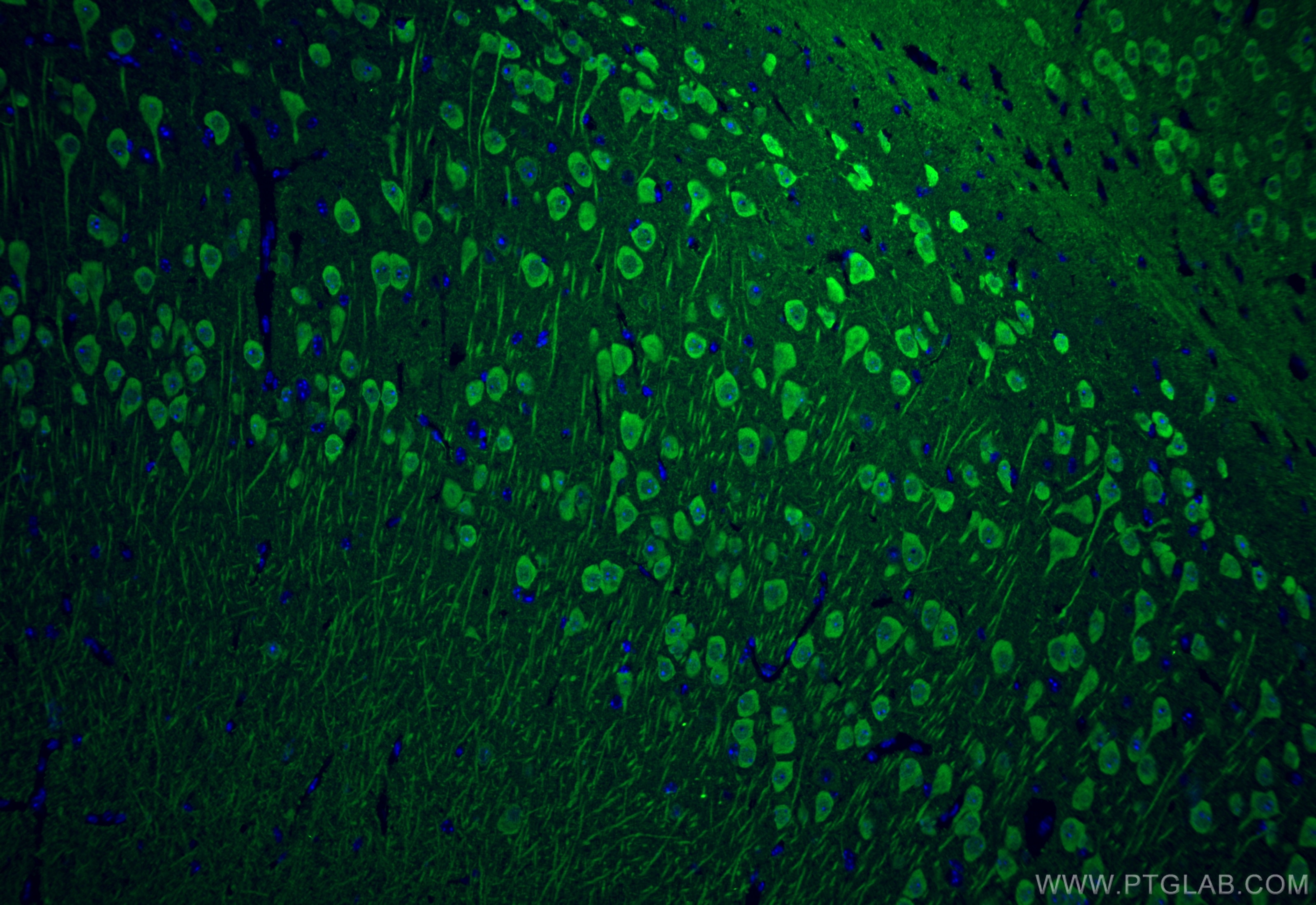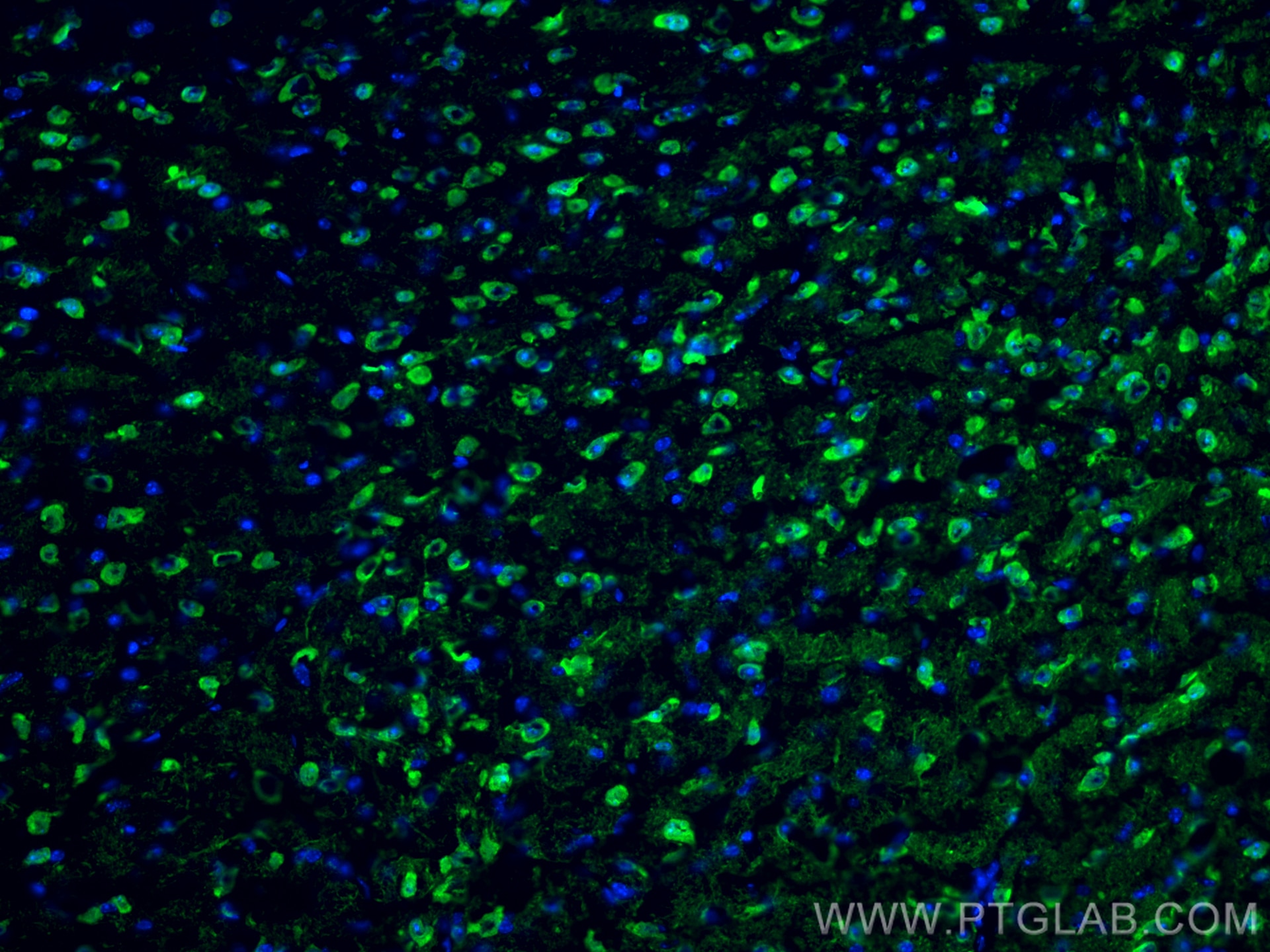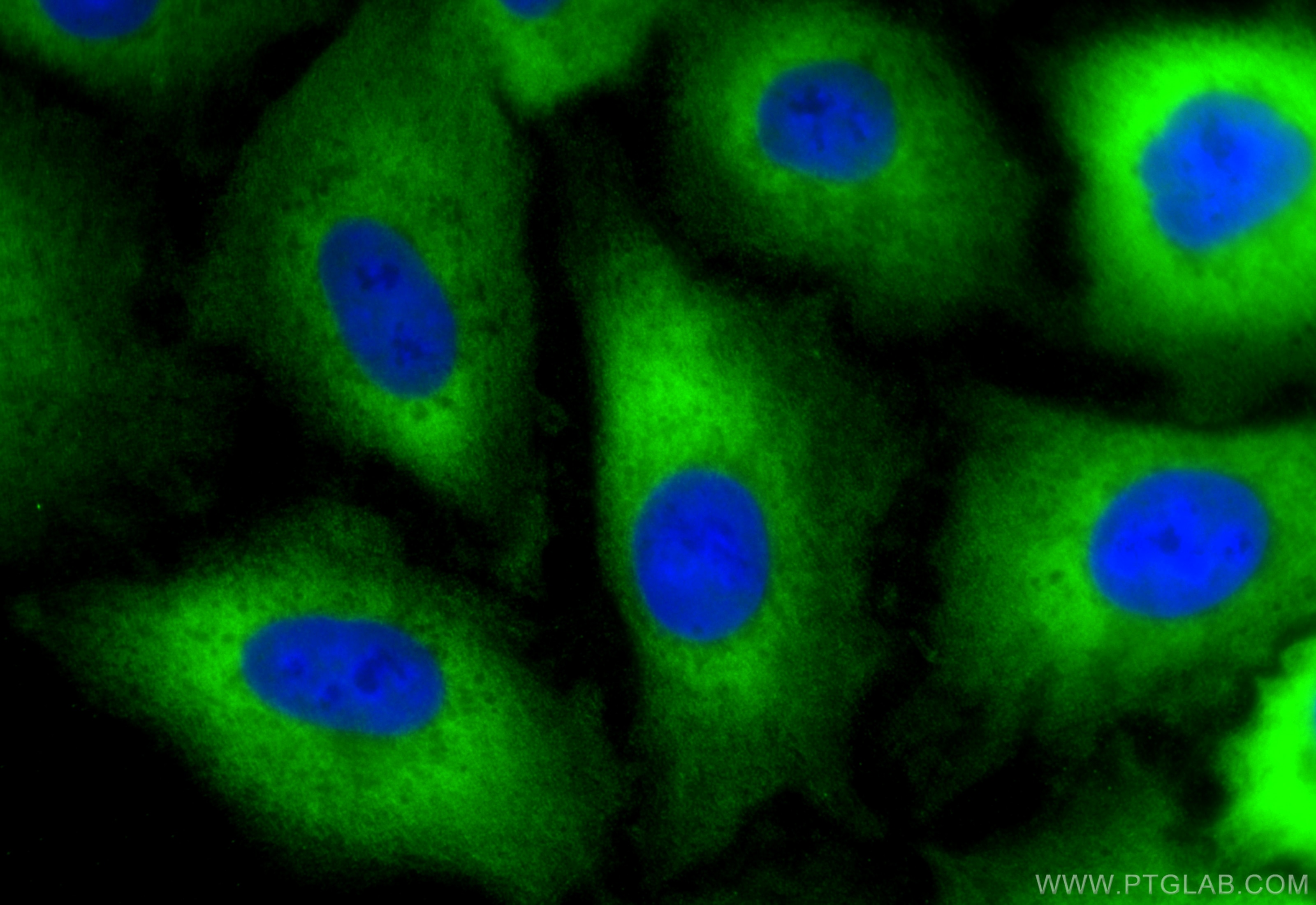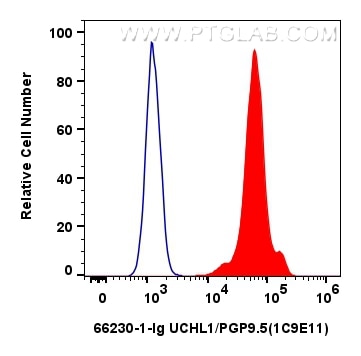Tested Applications
| Positive WB detected in | Neuro-2a cells, Y79 cells, PC-12 cells, Pig brain tissue, Pig cerebellum tissue, Rat brain tissue, Rat cerebellum tissue, Mouse brain tissue, Mouse cerebellum tissue |
| Positive IHC detected in | mouse cerebellum tissue, rat cerebellum tissue Note: suggested antigen retrieval with TE buffer pH 9.0; (*) Alternatively, antigen retrieval may be performed with citrate buffer pH 6.0 |
| Positive IF-P detected in | mouse brain tissue |
| Positive IF-Fro detected in | mouse brain tissue |
| Positive IF/ICC detected in | A549 cells |
| Positive FC (Intra) detected in | Y79 cells |
Recommended dilution
| Application | Dilution |
|---|---|
| Western Blot (WB) | WB : 1:20000-1:100000 |
| Immunohistochemistry (IHC) | IHC : 1:4000-1:16000 |
| Immunofluorescence (IF)-P | IF-P : 1:200-1:800 |
| Immunofluorescence (IF)-FRO | IF-FRO : 1:200-1:800 |
| Immunofluorescence (IF)/ICC | IF/ICC : 1:400-1:1600 |
| Flow Cytometry (FC) (INTRA) | FC (INTRA) : 0.40 ug per 10^6 cells in a 100 µl suspension |
| It is recommended that this reagent should be titrated in each testing system to obtain optimal results. | |
| Sample-dependent, Check data in validation data gallery. | |
Published Applications
| KD/KO | See 1 publications below |
| WB | See 6 publications below |
| IHC | See 3 publications below |
| IF | See 10 publications below |
Product Information
66230-1-Ig targets UCH-L1/PGP9.5 in WB, IHC, IF/ICC, IF-P, IF-Fro, FC (Intra), ELISA applications and shows reactivity with human, mouse, rat, pig samples.
| Tested Reactivity | human, mouse, rat, pig |
| Cited Reactivity | human, mouse, rat, pig |
| Host / Isotype | Mouse / IgG1 |
| Class | Monoclonal |
| Type | Antibody |
| Immunogen |
CatNo: Ag6547 Product name: Recombinant human UCHL1 protein Source: e coli.-derived, PET28a Tag: 6*His Domain: 1-223 aa of BC000332 Sequence: MQLKPMEINPEMLNKVLSRLGVAGQWRFVDVLGLEEESLGSVPAPACALLLLFPLTAQHENFRKKQIEELKGQEVSPKVYFMKQTIGNSCGTIGLIHAVANNQDKLGFEDGSVLKQFLSETEKMSPEDRAKCFEKNEAIQAAHDAVAQEGQCRVDDKVNFHFILFNNVDGHLYELDGRMPFPVNHGASSEDTLLKDAAKVCREFTEREQGEVRFSAVALCKAA Predict reactive species |
| Full Name | ubiquitin carboxyl-terminal esterase L1 (ubiquitin thiolesterase) |
| Calculated Molecular Weight | 25 kDa |
| Observed Molecular Weight | 27 kDa |
| GenBank Accession Number | BC000332 |
| Gene Symbol | UCHL1 |
| Gene ID (NCBI) | 7345 |
| RRID | AB_2881621 |
| Conjugate | Unconjugated |
| Form | Liquid |
| Purification Method | Protein G purification |
| UNIPROT ID | P09936 |
| Storage Buffer | PBS with 0.02% sodium azide and 50% glycerol, pH 7.3. |
| Storage Conditions | Store at -20°C. Stable for one year after shipment. Aliquoting is unnecessary for -20oC storage. 20ul sizes contain 0.1% BSA. |
Background Information
Ubiquitin C-terminal hydrolase L1 (UCHL1) was originally identified as a neuronal protein that accounts for nearly 2% of total brain proteins. UCHL1 activity protects neurons from hypoxic injury, and binding of stroke-induced reactive lipid species to the cysteine 152 (C152) of UCHL1 unfolds the protein and disrupts its function. Reduced hydrolytic activity of mutant UCHL1 is implicated in the pathophysiologic process of Parkinson's and Alzheimer's disease due to abnormal neurotoxic protein aggregation. (PMID: 31356902, PMID: 30760601)
Protocols
| Product Specific Protocols | |
|---|---|
| FC protocol for UCH-L1/PGP9.5 antibody 66230-1-Ig | Download protocol |
| IF protocol for UCH-L1/PGP9.5 antibody 66230-1-Ig | Download protocol |
| IHC protocol for UCH-L1/PGP9.5 antibody 66230-1-Ig | Download protocol |
| WB protocol for UCH-L1/PGP9.5 antibody 66230-1-Ig | Download protocol |
| Standard Protocols | |
|---|---|
| Click here to view our Standard Protocols |
Publications
| Species | Application | Title |
|---|---|---|
Theranostics UCH-L1-mediated Down-regulation of Estrogen Receptor α Contributes to Insensitivity to Endocrine Therapy for Breast Cancer.
| ||
Sci Rep Gingival proteomics reveals the role of TGF beta and YAP/TAZ signaling in Raine syndrome fibrosis | ||
Am J Physiol Gastrointest Liver Physiol Carbon monoxide produced by HO-1 upregulation is the main factor behind the abnormal motility seen in experimental ulcerative colitis in mice | ||
World J Gastroenterol Hydrogen-rich water alleviates constipation by attenuating oxidative stress through the sirtuin1/nuclear factor-erythroid-2-related factor 2/heme oxygenase-1 signaling pathway | ||
Toxicol Appl Pharmacol Ursolic acid alleviates paclitaxel-induced peripheral neuropathy through PPARγ activation | ||

